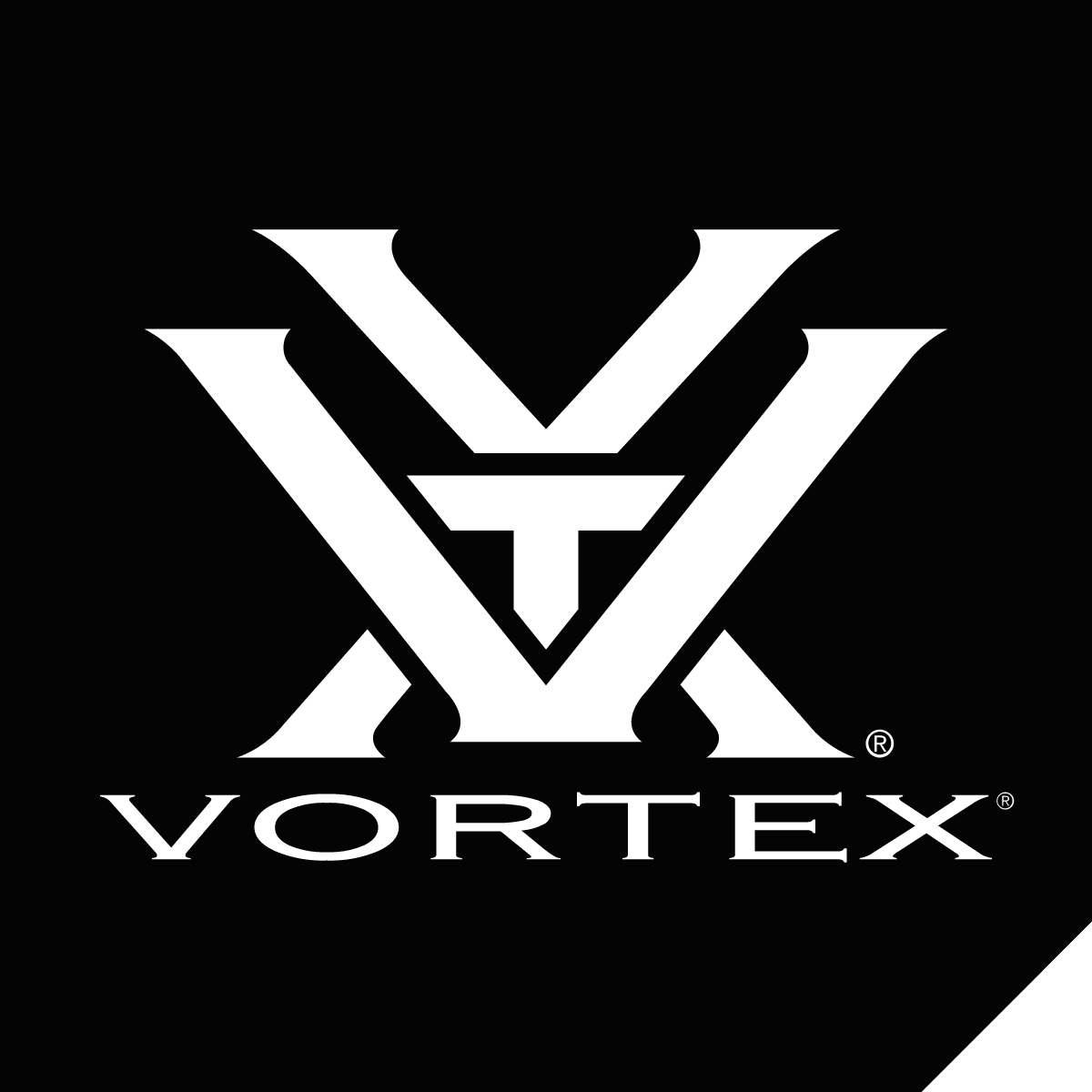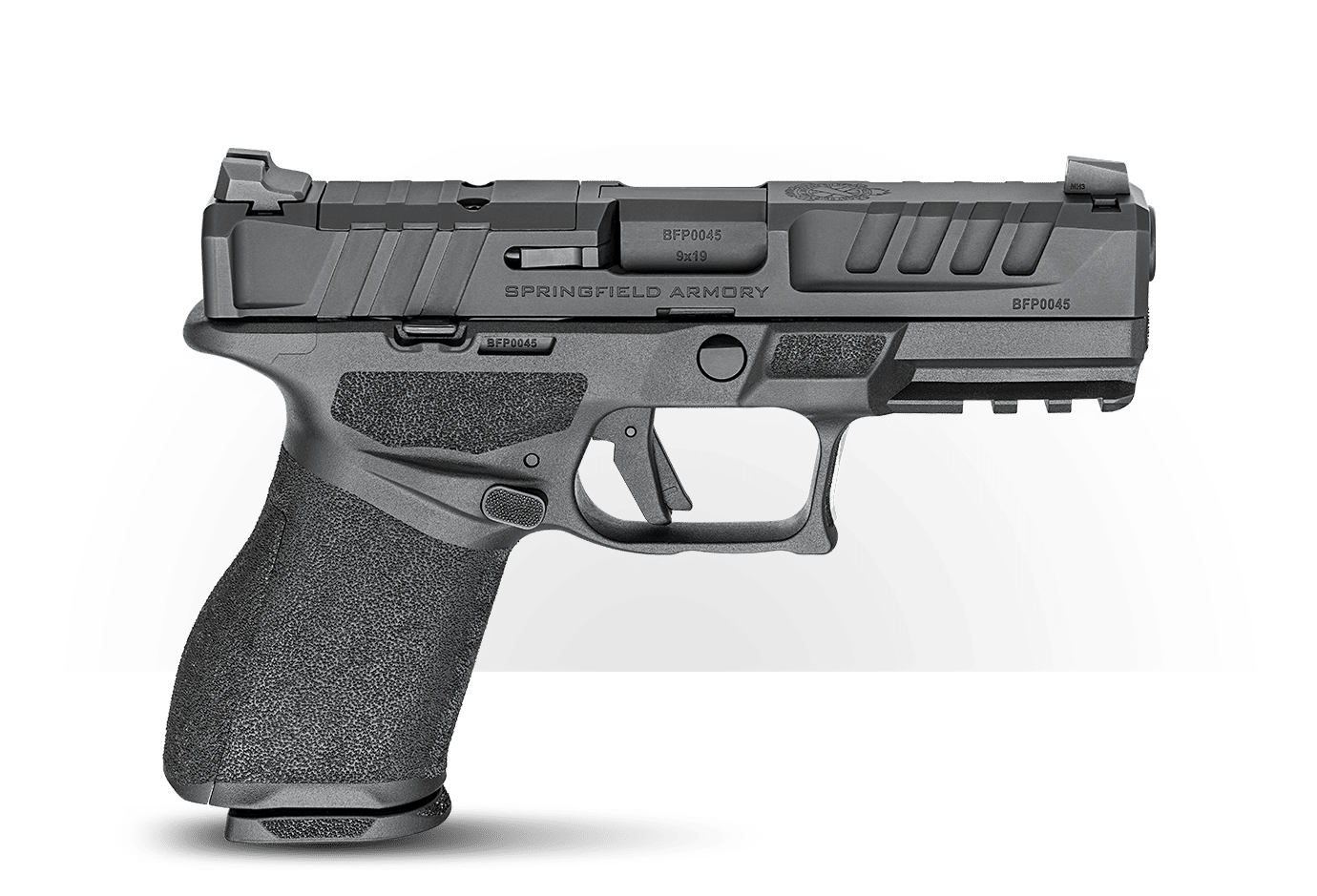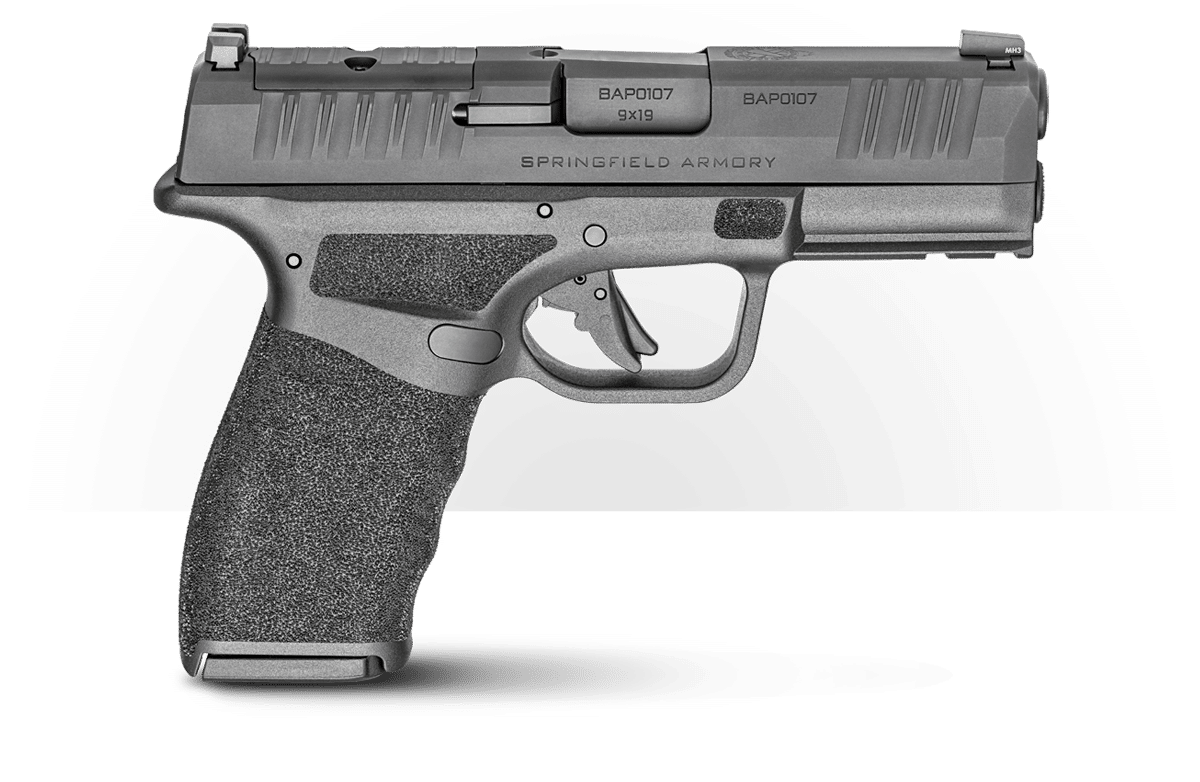In today’s article, Richard Johnson offers a hands-on review of the new Vortex Defender Enclosed red dot sights. Offered in both the Defender-CCW and Defender-ST models, the new Enclosed optics offer an increased degree of durability for anyone needing maximum reliability from their firearm’s sighting system. The optics were loaned to the author by Springfield Armory to conduct this review.
Vortex Optics just dropped enclosed-emitter versions of its popular Defender red dots. At launch, there are two models: Defender-CCW Enclosed and Defender-ST Enclosed. If you are familiar with the company’s original Defender line, these will be familiar — though, different.
Both of the new sights are enclosed for improved resiliency in real-world conditions. Both run a dual-power system with Solar Auto D-TEC technology backed by a traditional CR2032 battery. Additionally, the new red dots give you a choice of three built-in reticles that are easy to change in the field — with lock-out capability to ensure you don’t accidentally change them.
Sound interesting? It did to me.
For this review, I received two samples for evaluation. One was the Defender-CCW, and the other was the Defender-ST model. The CCW model is intended for smaller EDC firearms, while the ST is designed for use on duty-style firearms. For testing, I mounted the -CCW on a Hellcat Pro, while I added the Defender-ST Enclosed to my Echelon 4.0C. These wound up being great combinations.
About the New Sights
As red dot sights become mainstream in police and self-defense use, enclosed emitters are trending up in popularity. An enclosed emitter helps to keep the LED clean and protected from sweat, lint, dust, raindrops and range debris. This can be a very big deal for the practical use of an optic on a carry gun.
Both housings are made of 7075 aluminum, which provides a solid shell for the sophisticated internal parts of the system. Currently, black is the only housing color available. I expect that Vortex would introduce a tan option — as they did with the existing Defender line — if there is enough demand.
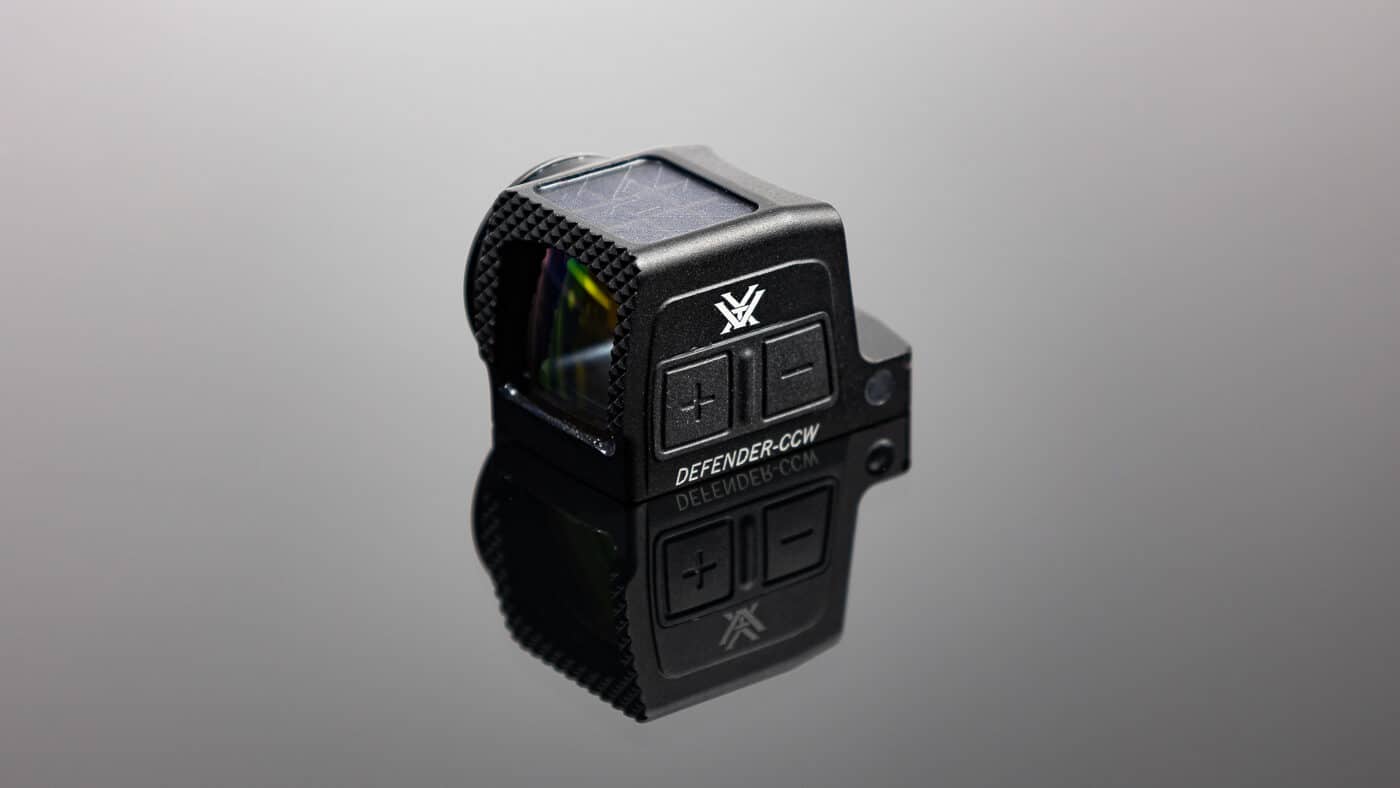
The Defender-CCW Enclosed measures about 1.6″ long and weighs roughly 1.3 oz with the battery. The Defender-ST Enclosed stretches to about 1.8″ and 1.6 oz. Both have large windows for their size.
Subjectively, the ST gives a little more sight picture and is the one I’d grab for a duty pistol or a carbine. The CCW is the “disappears on the slide” option for concealed carry where bulk matters. While those are my preferences, both can ride on a concealed carry pistol without issue.

Both carry Vortex’s Fast-Rack texturing on the front of the hood. If you’ve ever had to rack off a belt, barricade or table edge, that extra bite helps. This also goes back to the importance of the use of 7075 aluminum for the housing, which makes sure you can run the slide from the optic without damage.
Powering the Optic
Vortex Optics opted for a redundant power system that combines a solar panel with a traditional battery system. The Solar Auto D-TEC system is automatic, so no worries about manually swapping between modes. In bright light, the optic draws from the panel. In low light, it falls back to battery.
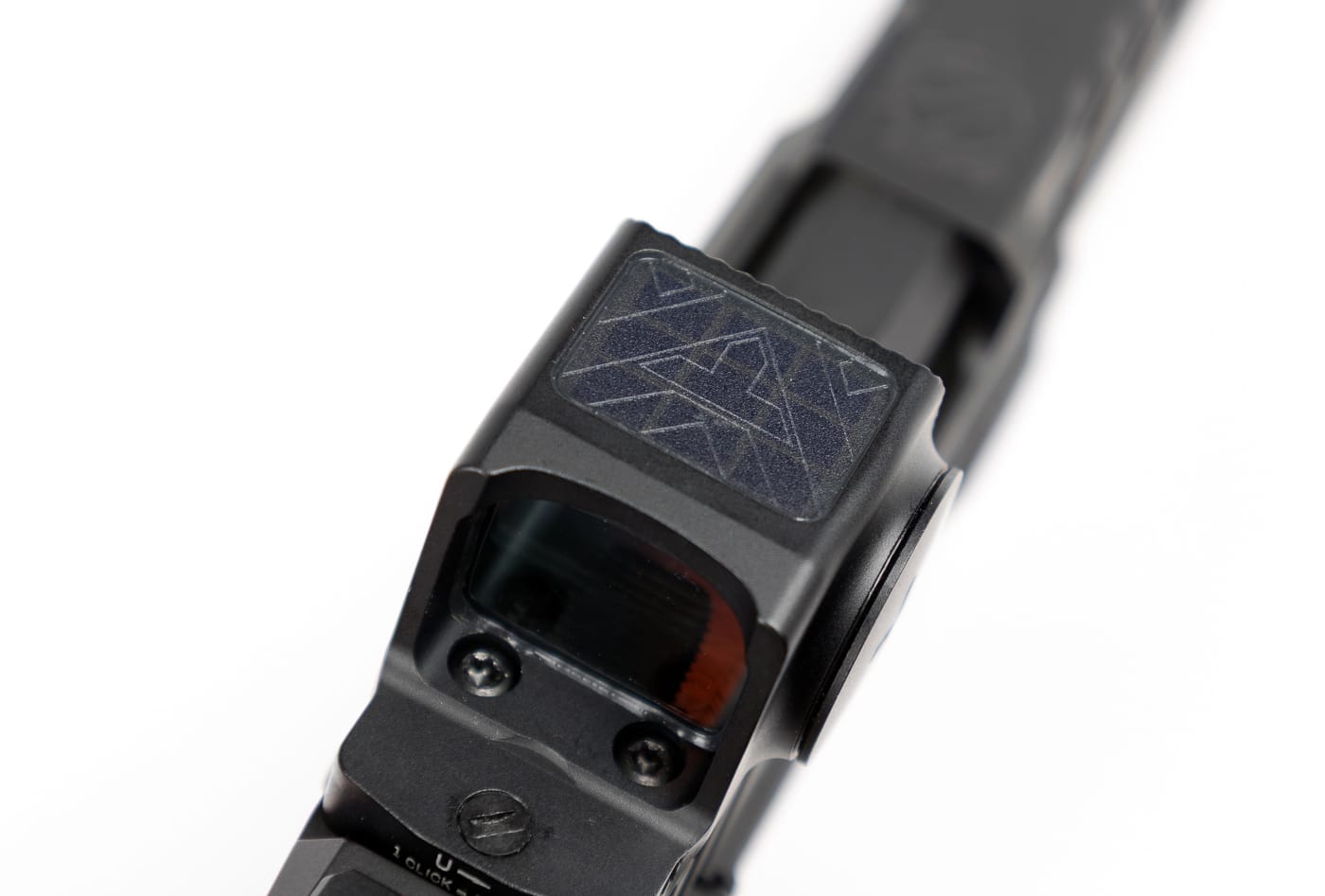
On the indoor range the solar contribution isn’t huge, but the benefit shows in transitional lighting: stepping into strong light or working near a bay door, the system stabilizes runtime and keeps you from living at higher battery drain.
The published 35k-hour number at setting 6 is already generous. With solar assist, the up-to-150k claim is plausible for realistic duty/carry brightness profiles. The battery installs on the side of the housing, so you do not need to remove the optic from the slide to replace it. The battery cap screws in and out with the included tool and stayed tight.
Vortex uses an auto-off function to help preserve battery life. Leave the optic on, and it will go to sleep when left motionless. Move the gun and the dot wakes. If you manually power the unit off, motion won’t wake it. That’s the correct trade-off for carry — set it once, let it sleep, and wake on draw.
Reticle Choices
The Defender-CCW Enclosed and Defender-ST Enclosed optics offer three reticle choices: 3 MOA dot, 32 MOA circle and a circle-dot combination with 12 brightness levels — including two night-vision settings. Plus and minus controls on the left side of the optic adjust the brightness levels.
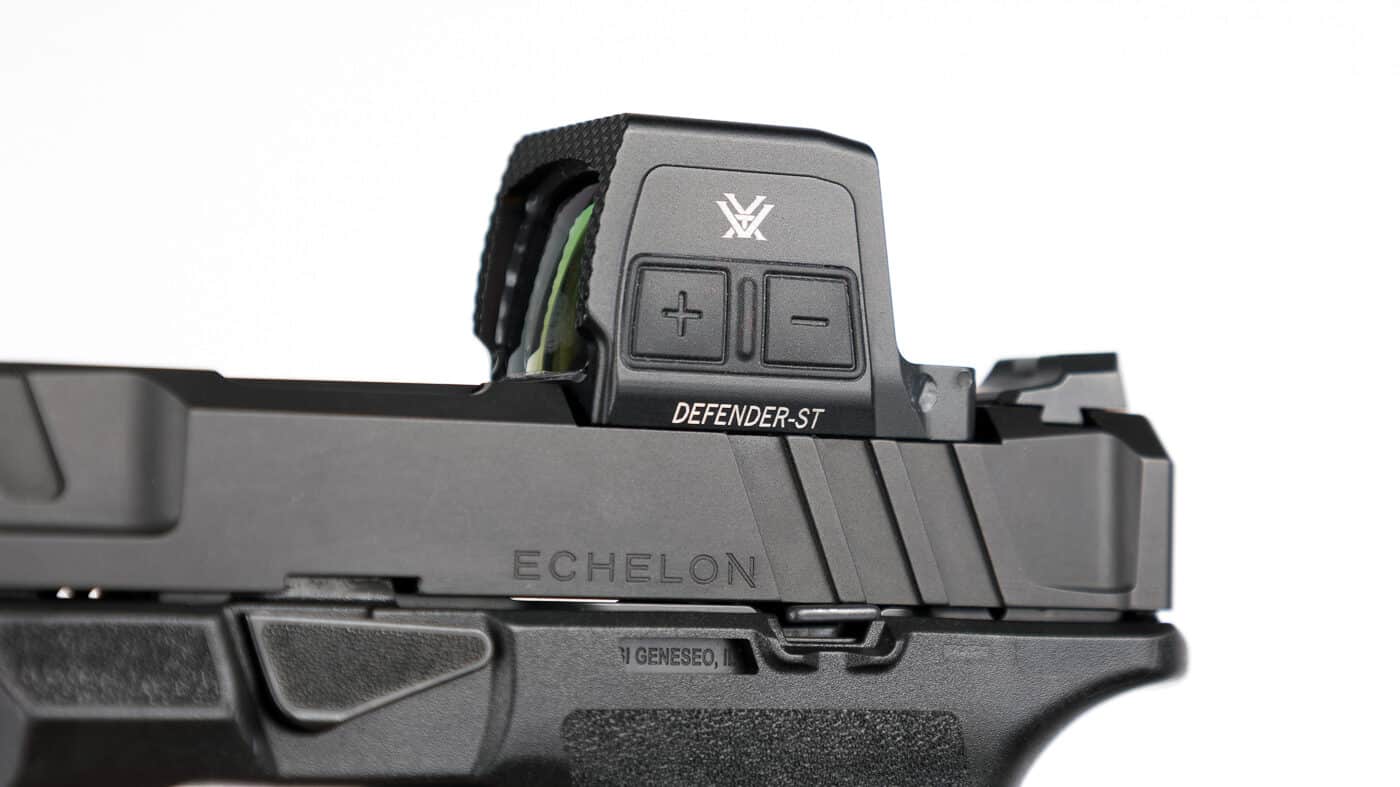
Press both adjustment buttons at the same time and you rotate through the reticle options. For my testing, I primarily used the dot only. However, I experimented with the other options and found the dot-in-circle reticle was intriguing. I look forward to doing further training with this to see if it offers practical advantages over a simple dot. The 32 MOA circle picks up fast on presentation, and the dot makes precise confirmation at distance easy.
There’s a button lockout mode to prevent accidental changes from bumps during concealed carry. It takes all of three seconds to toggle on or off and it eliminates unintentional brightness changes from clothing contact.
Both optics use an aspherical lens. Translation: this results in very little edge distortion for a micro window and a clean dot image. I didn’t see the “fishbowl” effect some budget minis show. The emitter bloom was controlled unless I deliberately over-drove the brightness. That’s normal behavior.
Test Platforms
My test setup was straightforward. I put the Defender-CCW Enclosed on a Springfield Armory Hellcat Pro. That’s a direct Shield RMS footprint mount, so no plate. I put the Defender-ST Enclosed on a Springfield Echelon 4.0C. The Echelon supports direct mounting for the Leupold DeltaPoint Pro footprint, which is the same as that of the -ST Enclosed. So again, no plate.
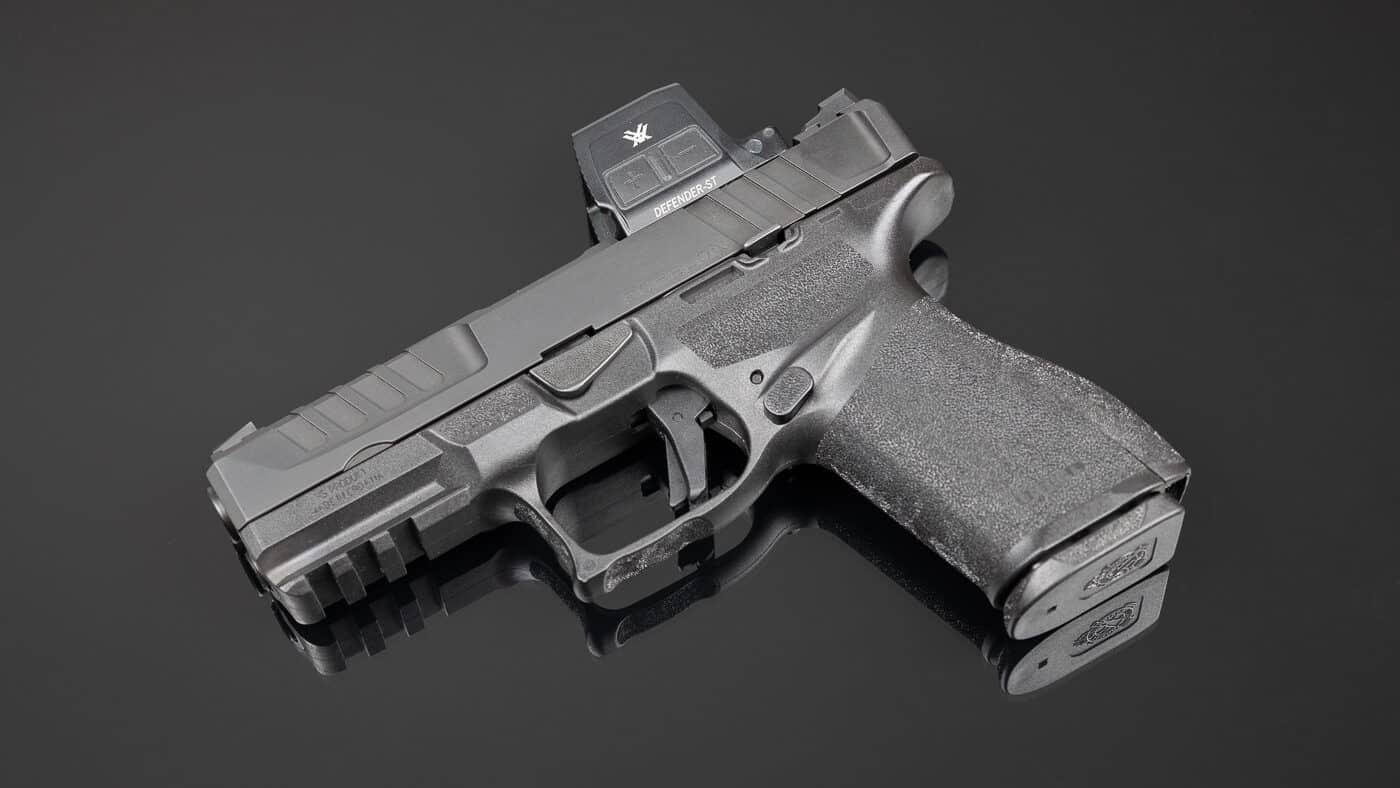
Included with both optics are a mess of baggies with different screw sizes. Each small bag was labeled, and finding the correct size was simple. Also included is a combo tool that has drivers for the screws in addition to making zero adjustments and swapping batteries. Nothing exotic. The whole system is practical and straightforward.
Range Time
Two shooters — an experienced friend and me — ran the optics on an indoor line. We both came away liking them. I can’t say that there was anything revolutionary about shooting with these optics, but that’s not a negative. Red dot sights should be reliable and relatively boring. When they do the job, they present an unwavering aiming point that is quick to pick up for accurate shots. And that’s what the Enclosed Defender sights did.
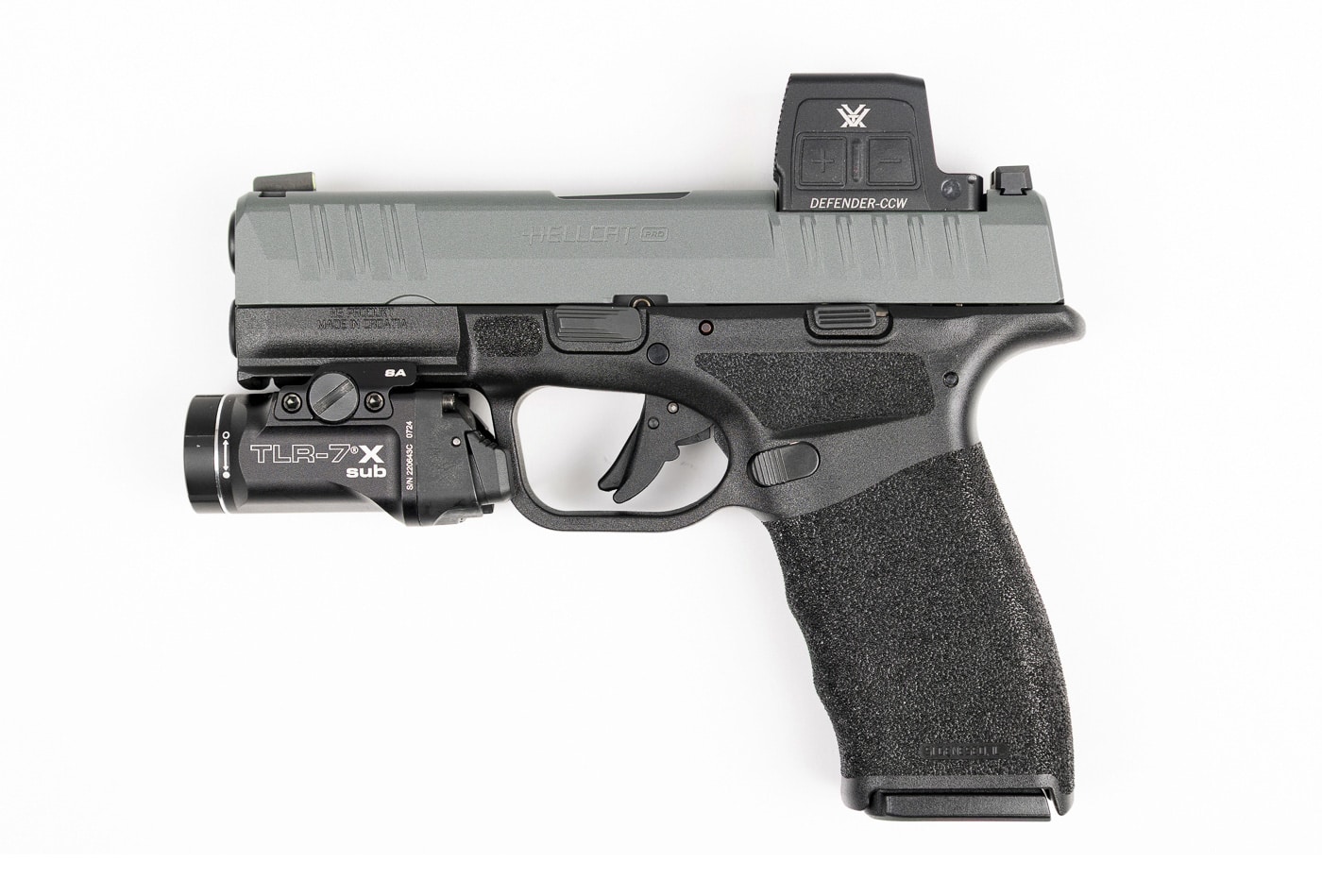
With the Echelon and the ST, the bigger window and slightly heftier housing made acquisition feel slightly faster, but neither optic felt slow. Both optics rode out recoil with no flicker, no intermittent shutoff and no control hiccups. Motion activation behaved as advertised: holster the gun, wait, present — the dot’s on.
Adjustments tracked as expected. The Vortex tool is one-piece and solid, so it slips easily into a pocket and is available to make windage and elevation adjustments as needed. Once dialed in, the aiming point stayed put. No wandering zero through the session, including one-hand manipulations against the bench using the optic’s front face. That Fast-Rack texture again: small feature, high value.
For folks worried about height over bore and iron sight co-witness, that’s going to depend on your gun and sights. On my Hellcat Pro with standard irons, the factory sights were just there. Should the red dot go down, you can still deliver accurate shots, but it will be a little harder to line up the sights.
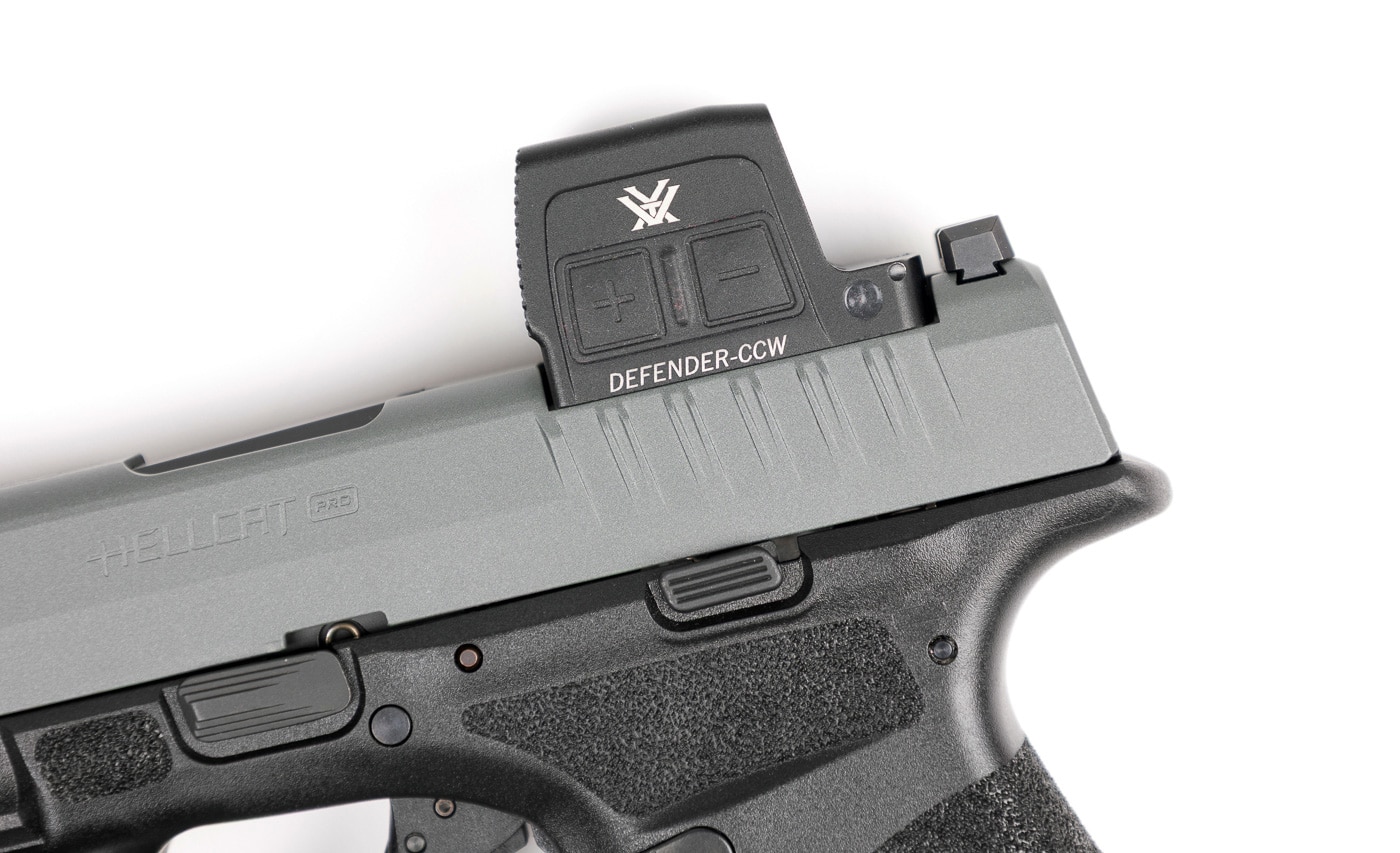
On the Echelon, similar story. The sights are a little taller than the Hellcat and are more visible through the Vortex window, but still not a full iron sight picture.
Holster fit was normal for optics-ready rigs; just verify your holster’s hood or sweat guard clears the slightly blockier enclosed housing. I had no problems with any of the carry rigs I tested.
Final Thoughts
Who should buy which optic? If you carry a micro or compact pistol and want minimum bulk with full closed-emitter protection, the Defender-CCW Enclosed is the right pick. The Shield RMS footprint means easy compatibility with a lot of slimline pistols, especially the Hellcat family.
If you’re setting up a duty pistol, want a bigger window, or plan to move the optic onto a shotgun or carbine as needed, go with the Defender-ST Enclosed. The DeltaPoint Pro footprint is common on service-sized guns. Both come with a Picatinny rail mount if you want to zero on a carbine or run it as a backup.
I think Vortex took the practical parts of its Defender line and blended in enclosed emitters with solar assist for very compelling sight options. Based on my testing, I like both of these and recommend you check them out. The Defender-CCW Enclosed carries an MSRP of $299.99 while the Defender-ST Enclosed has a suggested retail price of $379.99.
Editor’s Note: Please be sure to check out The Armory Life Forum, where you can comment about our daily articles, as well as just talk guns and gear. Click the “Go To Forum Thread” link below to jump in and discuss this article and much more!
Join the Discussion
Featured in this article
Read the full article here


